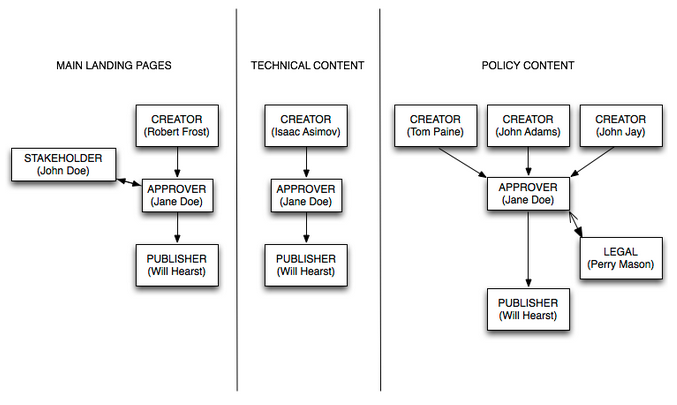Getting a new website going is like moving your family into a new house.
A good content inventory gets you packed, with everything organized and labeled correctly. (Sometimes this might mean tossing stuff that’s not worth keeping through the move.)
Good mapping makes content migration as smooth and frictionless as possible, the way putting boxes labeled Dishes & Silverware and Pots & Pans straight into the kitchen helps streamline unpacking.
Finally, content governance is what keeps your household humming along when you’re all moved in.
These are the processes and systems that help your family keep order, put things away, clean up and take care of routine maintenance tasks. Some of these things might get outsourced (heavy carpet cleaning, for instance), while others are taken on as personal chores.
Your organization’s content governance answers questions such as:
- Who creates, approves and publishes content?
- Which kinds of content are temporal and what do their life cycles look like?
- What are the guidelines for approving and reviewing content?
- What are the taxonomies and metadata that keep content organized?
- What are ways that you repurpose content?
How does a governance plan begin to take form?
A good way to start is with a simple visual hierarchy of the general flow of your content creation process:

Another powerful governance tool is a content tracking spreadsheet. You can build this according to your site structure (the way you might plan household tasks by area), or plan by type of task. This allows you to identify sources and destinations for your content, highlight decisions around content (e.g. image or other file specifications) and make sure content that needs to be approved passes by the right stakeholders. It's also important to capture or make decisions around timeline: when new content is added, how often content gets reviewed for updates, when content is taken down.
One thing you’ll find handy for streamlining the workflow is a style guide. This establishes guidelines for how you create content, and against which you measure content when reviewing and approving. In the same way, Dad might have a handy list of steps for what counts as a mowed lawn: corners are included, grass is short but not bald, mower is returned to the garage, etc.
Eek — too much work!
Tackling content governance is often daunting: Mom rightfully envisions that this will just be a long list of tasks, all assigned to her and requiring more hours than there are in a day. This empowers you, however, to make the decisions that align what you want or need to do with the resources that those goals require. Ultimately, investing time upfront to streamline your process and ensure your resources fit your content goals saves you time over the entire life of your content.